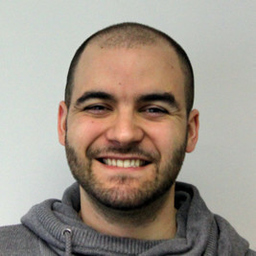Ing. Bruno Fernandes
Angestellt, Electronics Engineer, European XFEL GmbH
Hamburg, Deutschland
Werdegang
Berufserfahrung von Bruno Fernandes
Bis heute 5 Jahre und 4 Monate, seit Feb. 2019
Teamleiter / Team Leader
European XFEL GmbH
Bis heute
Electronics Engineer
European XFEL GmbH
• Development of high-level uniform FPGA programming Framework (Simulink, TCL/TQ); • VHDL developer - behavioural, synthesis, verification and implementation (ISE, ModelSIM, Altera); • Development and design (Schematic Capture, Layout) of custom PCBs for high speed/throughput Boards (Altium, Eagle) ; • Development of software for FPGA firmware development (TCL, Python, PyQt, C++); • Supervising and supporting students on related projects;
9 Monate, Sep. 2010 - Mai 2011
Invited assistant professor
University of Lisbon, Faculty of Science
Responsible for the laboratory classes in Electronic Circuits and Digital Systems (1st year mandatory class for Physics, Biomedical and Biophysics engineering students)
10 Monate, Mai 2009 - Feb. 2010
Research Engineer
INESC-ID
Analysis of the specification, timing constraints and implementation/development of VHDL modules to perform FFT, Interleaver, Puncture and Demodulator functions suitable for a UWB (Ultra Wideband) receiver based on MB-OFDM modulation. Validation in FPGAs. Target FPGAs: Xilinx Virtex-4 e Virtex-5. Main tools used: Emacs, Xilinx ISE 10, ChipScope 10 and Matlab. Project Ref PTDC/EEA-ELC/67993/2006 Website of the Project: http://esda.inesc-id.pt/UWBR/
Implementation, validation in laboratory and development of low-level software communication for the MICTP module level, a subsystem of the muon detector in the ATLAS experiment. (Dissertation theme for Physics Engineer MSc degree.) Target FPGA: Altera Stratix-II. Main tools used: Xemacs, Altera Quartus II (9.0), ModelSim (6.4a) and Synplify (C-2009.03).
Ausbildung von Bruno Fernandes
10 Monate, Sep. 2008 - Juni 2009
Engineering physics
Faculdade de Ciências da Universidade de Lisboa
6 Jahre und 10 Monate, Sep. 2002 - Juni 2009
Engineering physics
Faculdade de Ciências da Universidade de Lisboa
Sprachen
Portugiesisch
Muttersprache
Englisch
Fließend
Deutsch
Gut
